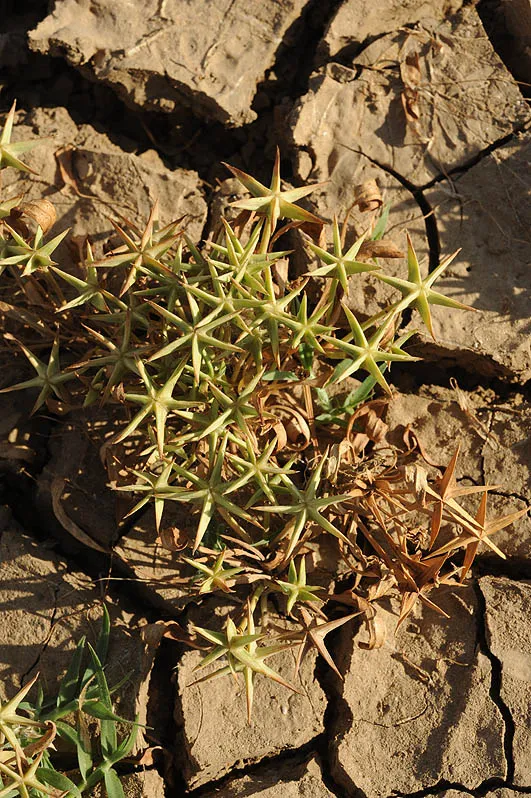Thick-leaved Maerua
Maerua crassifolia

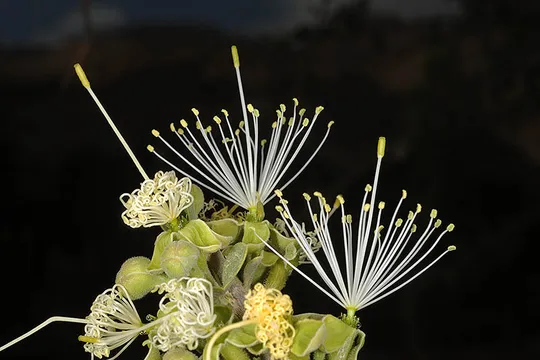
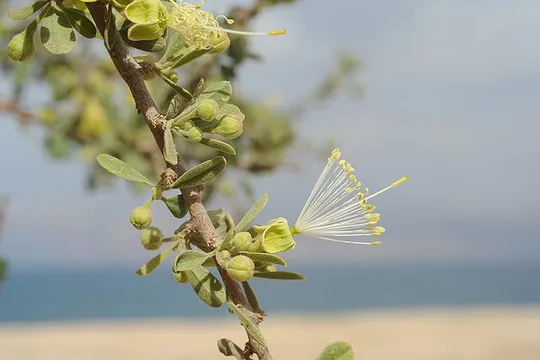

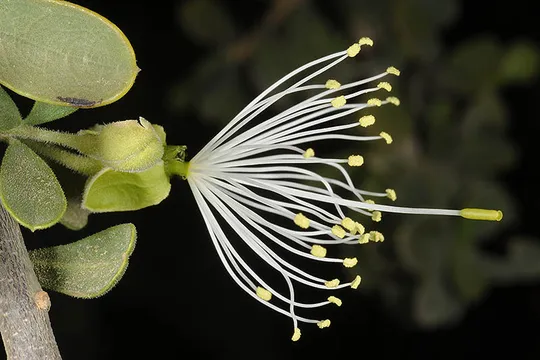
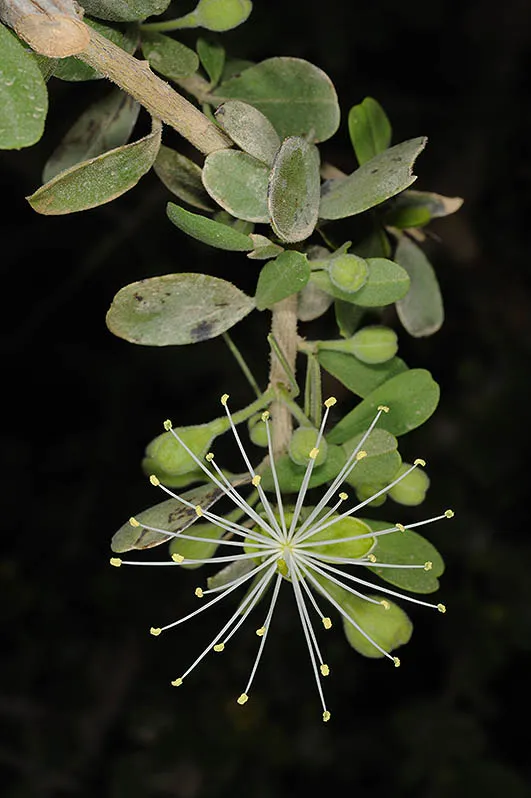
In Israel Maerua crassifolia is found in the Dead
Sea region at two sites: En
Gedi, at the foot of the En
Gedi spring (five trees) and in Nahal Lot below the cliff on the southern slope
(three trees). In Wadi Hemar a single shrub was once found at the foot of a
high cliff on the southern wall, but it dried up (Belcher, 1999). During the
past 15 years plants from the Nature and Parks Authority plant nursery at En
Gedi were planted along the Dead Sea shore road and a the entrance to David
Stream. Hundreds of M.
crassifolia
plants grow on the Jordanian side of the Dead Sea, mostly on alluvial fans of
Moab and northern Edom wadis on the flats along the Dead Sea.
Rocky slopes in
desert oases, at the foot of cliffs in Judean Desert wadis the edge of the Dead
Sea. In Jordan the plant grows in flat areas rather than in canyons, on a
substrate of sandstone, limestone or granite conglomerates in small or large flow
channels of the fans of large wadis that run down to the Dead Sea.
The genus Maerua
comprises 50 species found in Africa and the Indian subcontinent. According to
Zohary the M. crassifolia individuals at En Gedi
are a special variety, the "Dead Sea variety". Its characteristics
are flowers in small clusters of only 2-4, a calyx covered in dense hairs, a glabrous
ovary and spherical fruit that mostly has a single seed. This unlike the East
African Maerua trees, whose fruit is more elongated and has up to 10
seeds.
·
The wild populations of Maerua
crassifolia include only a few plants, but planted
populations have dozens of plants.
·
Frequent dry years endanger the plants
at En Gedi and Wadi Lot.
·
The plant is protected by law and its
sites are within the Judean Desert and En Gedi nature reserves.
·
The plant is found in Sudanian areas of
the world and is not globally endangered.
Existing Maerua crassifolia populations should be
populated and reinforced at suitable sites in the species' range. Reintroduction
by growing plants in nurseries and planting them at En Gedi has already been
successful and could ensure the continued survival of M. crassifolia in Israel (Belcher, 2004;
Belcher, 2010; Belcher and Belcher, 2001).
Maerua crassifolia grows from Morocco
and Mauritania in the west through the Arabian Peninsula to Persia and Pakistan
in the east. The world's largest M. crassifolia populations
grow on the Sahel plains south of the Sahara – in Niger, Chad and Mali. In East
Africa it is found in Somalia, Sudan and Egypt. There it grows in dry arid
savannas, open thorny shrubbery with an annual precipitation regime of 100-400
mm of rain. There is no rain at all for 9 to 11months each year. In these areas,
it dominates together with varieties of Acacia, myrrh, Leptadenia,
Salvadora, Balanites and Capparis decidua. In Jordan, M. crassifolia is fairly common in the section
between the Karak -El Mazraa junction and Safi. Interestingly it is not found
in Southern Sinai.
Maerua crassifolia is a shrub or small tree growing in wadis
or at the foot of cliffs in the Dead Sea area and southern Judean Desert. It is
extremely rare and continuously endangered in the wild. Although it is common
in the Sudanian regions of the world, it is important to preserve the Judean
Desert population, which was described and identified as an endemic species.
This is the world's northernmost population of the species, which is disjunct from
other populations. Plantings of the species in the En Gedi area already contributed
to its preservation in Israel and additional re-population in nature should be
conducted.
בלכר מ. 1999. שמורת עין גדי בשנת 1997 – בהשוואה לחמש השנים הקודמות. ידיעון הרשות לשמירת הטבע והגנים הלאומיים, 1 (נספח מקצועי): 12-20.
בלכר, מ. ובלכר, א. 2001. גינון בצמחי בר בבקעת ים המלח – כלי לשמירת הטבע והנוף. רשות שמורת הטבע והגנים ובית הספר השש שנתי "עין גדי", עמ' 24.
בלכר מ. 2004. ממשק מעיין עין גדי וסביבותיו: תכנית רעיונית והנמקתה. רשות הטבע והגנים, ירושלים, עמ' 14.
בלכר מ. 2010. המשימה: השבת עצי עין גדי. בשביל הארץ, 36: 26-28.
Current Occupancy Map
| 1000 squre meter pixel | 5000 squre meter pixel | 10000 squre meter pixel | |
|---|---|---|---|
| number of observations | 0 | 0 | 0 |
| in total pixels | 0 | 0 | 0 |
| Family | Capparaceae |
| Classification | On the endangered species list |
| Ecosystem | Desert |
| Chorotype | Sudanian |
| Conservation Site | Wadi Hemar |
| Rarity |
1
4
6
|
|---|---|
| Vulnerability |
0
3
4
|
| Attractiveness |
0
1
4
|
| Endemism |
0
0
4
|
| Red number |
1
4.7
10
|
| Peripherality | S |
| IUCN category | DD EW EX LC CR EN VU NT |
| Threat Definition according to the red book | Endangered |
 Based on:
Based on:



